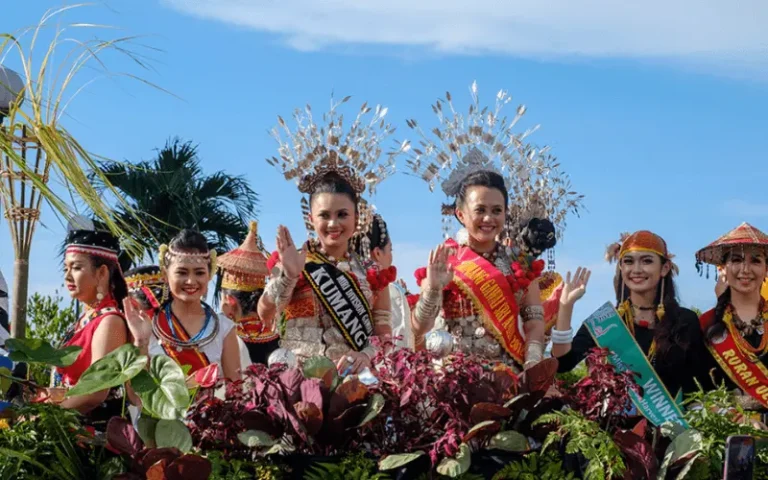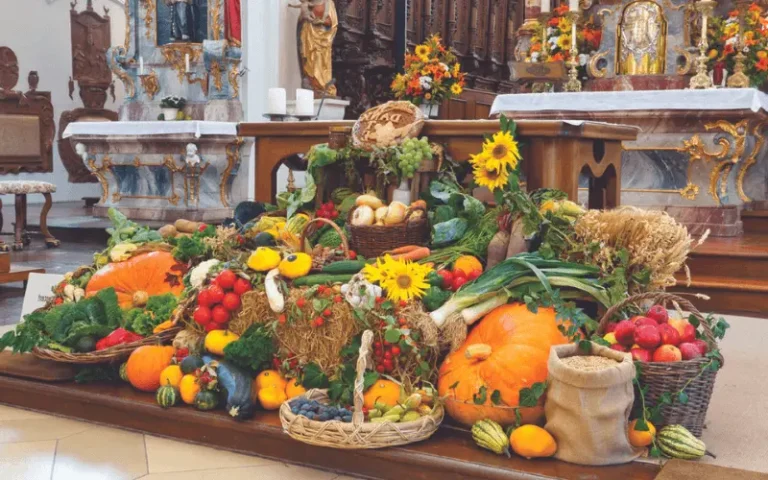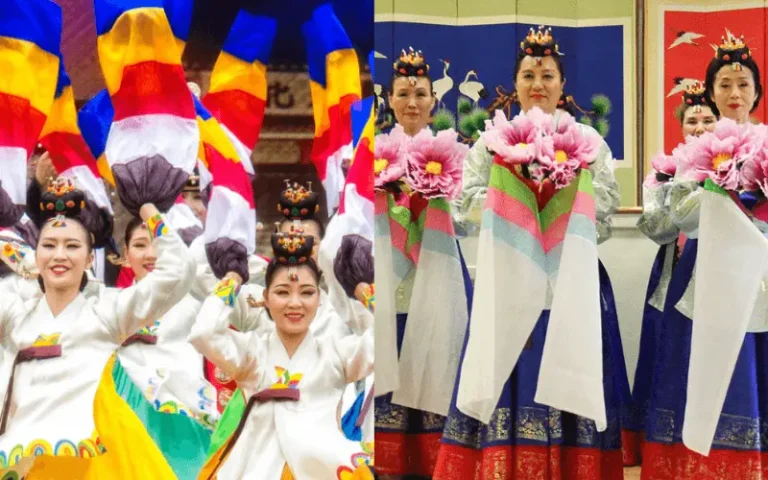Pongal Festival (All You Need To Know)
Pongal, also known as Thai Pongal, is a vibrant Indian harvest festival celebrated with gratitude for nature’s bounty, typically occurring in January. The festival marks the start of the auspicious month of Thai and honors the Sun god Surya, with four-day festivities. Families gather to cook a special dish called Pongal, enjoy traditional rituals, and adorn in colorful attire, symbolizing unity and abundance in Southern India.
However, why do people celebrate Pongal? What’s its history? And when and how is this beauty festival celebrated in India? What is the recipe for special food Pongal for this special day? Till the end of the article, you will learn about this Southern India Harvest Festival.
History of the Southern India Harvest Festival?
This festival has ancient roots dating back centuries in Southern India. It’s a vibrant celebration that expresses gratitude to the Sun god Surya, nature’s forces, and the animals and people supporting agriculture. Records suggest its mention in various texts and inscriptions, with some dating back to the Chola period.
During this time, the festival’s central dish, Pongal, emerged and was offered in temples as prasadam, a sacred offering. The dish evolved, with temple inscriptions detailing recipes similar to the modern-day Pongal. Variants of the term “ponakam” or “ponkal” are found in these records, describing the festive dish served during the Pongal celebrations and as part of community meals in Hindu temples for pilgrims or festive occasions. This rich history signifies the festival’s deep cultural and religious significance in Southern India.
How this festival is celebrated and what are the traditions? Now let’s talk about them.
Celebrations (Days of the festival)
First Day: Bhogi Pongal
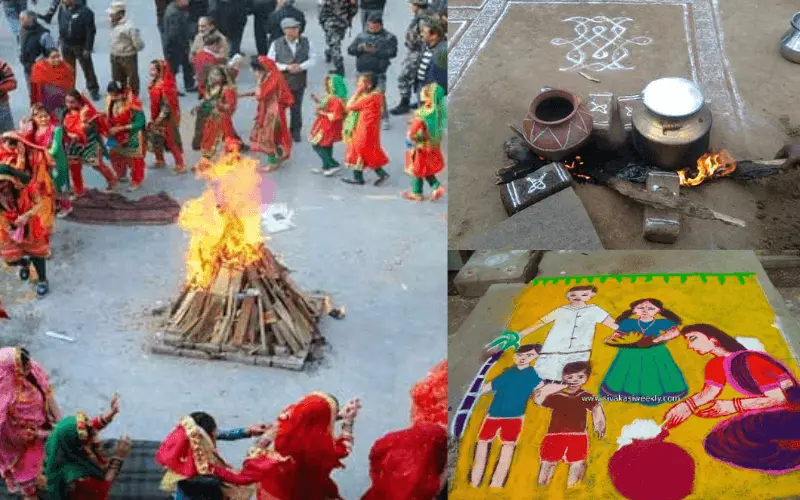
This initiates the festivities, observed by cleaning and discarding old items to welcome the new. Homes undergo thorough cleaning, decorating, and painting to don a festive look. In villages, the horns of oxen and buffaloes are painted. People wear new clothes to mark the start of this festival, dedicated to the deity Indra, the god of rain.
Second Day: Thai Pongal
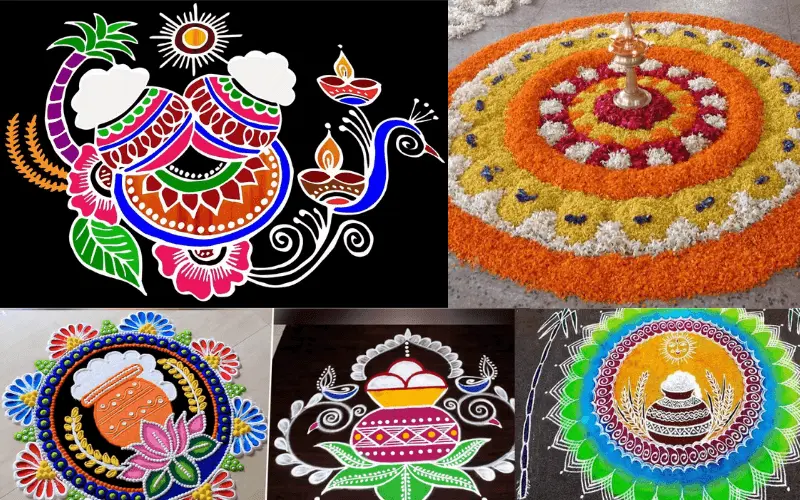
It is also known as Surya Pongal or Perum Pongal, the primary festive day, centers around expressing gratitude to the Sun god Surya, nature, and farm animals. The highlight involves preparing the dish “Pongal,” a sweet rice delicacy made with jaggery, rice, and lentils. Families gather outdoors to cook this dish, allowing it to boil over as a symbol of abundance and prosperity. the celebration on this day also includes drawing colorful decorative floor patterns called kolam and feasting on various Pongal dishes.
Third Day: Maatu Pongal

The third day revolves around honoring and worshiping cattle (Maatu) for their role in plowing the land. Cows are bathed, adorned with colorful accessories, and fed special treats to acknowledge their contribution to agriculture.
Fourth Day: Kaanum Pongal

This is also known as the Kanu Pongal, as the final day, emphasizes family gatherings and outings. Families visit relatives, engage in recreational activities, and often go for picnics at scenic spots.
Throughout these days, beautiful kolams enhance the festive charm, while traditional music, dance, and cultural performances enliven the celebrations. Families dress in their best attire, exchange gifts, and relish special dishes like delicious sweet Pongal, enhancing the festive atmosphere.
Now let’s talk about some of the specific traditional recipes for this special day.
Pongal Recipes
1. Sweet Pongal Recipe

Ingredients
Method
KEY TIPS:
2. South Indian Pongal Recipe
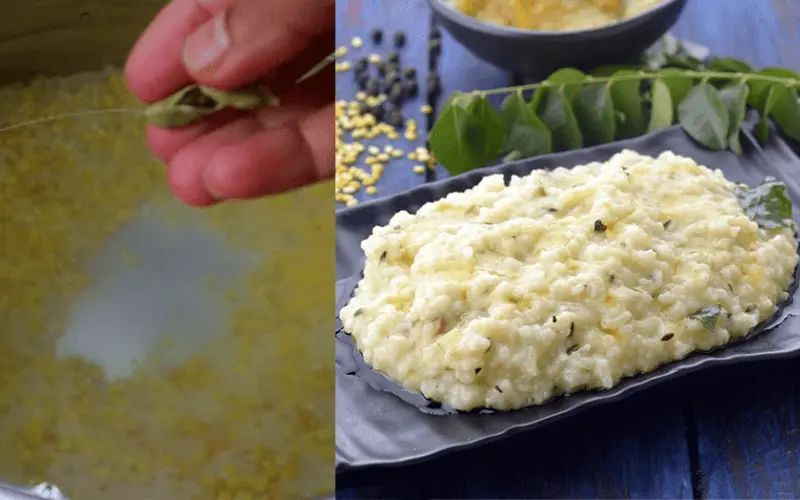
Ingredients
Method
KEY TIPS
3. Instant Pot Pongal Recipe

Ingredients
Method
KEY TIPS
4. Recipe For Ven Pongal
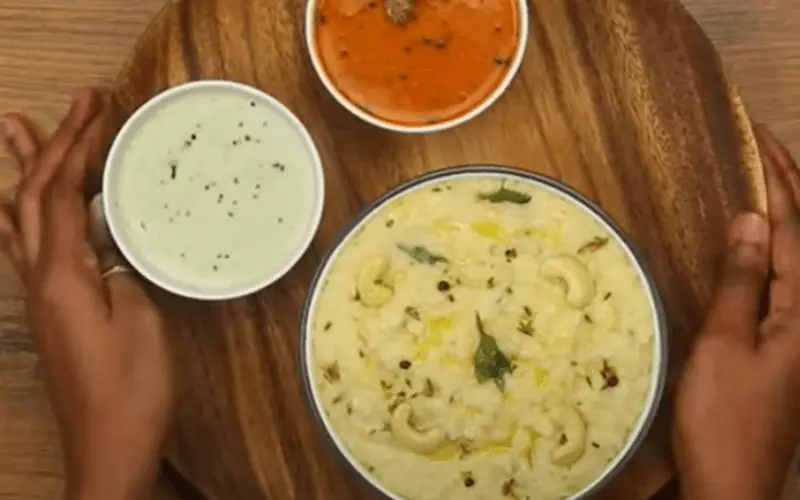
Ingredients
Method
What are the dates of the Southern India Harvest Festival?
This festival is typically celebrated in the month of Thai according to the Tamil solar calendar and commonly occurs on January 14 or 15. In 2024 Pongal is anticipated to be observed from Monday, January 15, to Thursday, January 18.
The dates of this Festival in 2023, 2024, 2025,2026 are below:
| Year | Date | Days |
|---|---|---|
| 2023 | 15 January | Sunday |
| 2024 | 15 January | Monday |
| 2025 | 14 January | Tuseday |
| 2026 | 14 January | Wednesday |
Regional and Cultural Variations of Southern India Harvest Festival
Regional and cultural variations in this festival celebrations offer a fascinating insight into the diverse practices associated with this festival. Kerala, known for its Pongala observance, hosts a remarkable gathering of women at the Attukal Bhagavati Temple in Thiruvananthapuram. This celebration, rooted in Tamil culture, attracts millions of women from various backgrounds, marking it as the largest gathering of its kind, recognized by the Guinness Book of World Records.
Meanwhile, community Pongal gatherings emphasize ceremonial worship, involving families in a ritualistic preparation that encompasses selecting pots, kindling fires, and offering items like sugarcane sticks, bananas, and coconuts.
Beyond India, the Tamil diaspora globally, from countries like Malaysia, Mauritius, Australia, and the United States to Singapore, actively celebrates this festival as Thanksgiving festival. Even in Singapore, where agriculture isn’t prevalent, this festival holds significance as a moment to express gratitude to Mother Nature for sustenance, strengthening familial ties, and fostering community connections. Little India in Singapore bustles with vibrant festivities, organized by entities like the Indian Heritage Centre and LISHA, illustrating the festival’s relevance in an urban landscape.
Read other Harvest Festival Guides by Days Discuss
Mid-Autumn Festival (Moon Festival)
Holi Festival 2024| All you need to know
Sukkot 101| Quick Guide to Celebrating this Joyous Festival
Songkran 2024 (Thailand’s New Year Water Fight Festival)
Chuseok 2024| Korean Thanksgiving and Harvest Festival Quick Guide to Celebrate
Thanksgiving Day: History, Global Celebrations, and 6 Amazing Games for Festive Fun
Pahiyas Festival (Everything You Need To Know)
Conclusion
Pongal stands as a significant Indian festival celebrated primarily in South India, marking the essence of gratitude toward nature’s bounty. It’s distinguished by rituals like preparing the sweet Pongal dish, honoring cattle, and creating vibrant kolam patterns, emphasizing thanksgiving and communal harmony.
Frequently Asked Questions
What is Pongal the celebration of?
It is a celebration that honors the Sun, Mother Nature, and the farm animals for their contributions to a plentiful harvest. It’s an expression of gratitude toward these entities for their essential roles in agricultural abundance.
What religion is the Pongal festival?
It is a four-day Hindu festival widely observed throughout South India. It holds significant cultural importance among Hindu communities in this region.
What is the scientific reason for the Pongal festival?
The scientific significance of this festival is linked to the Sun’s transition into Capricorn or Makaram, known as Makara Sankranti. Tamilians refer to it as “Thai Thirunal,” signifying the potential for growth, success, and the opportunity to manifest a prosperous future.
What is the Tamil holiday Pongal?
It also known as Thai Pongal (தைப்பொங்கல்), is a multi-day Hindu harvest festival celebrated predominantly by Tamils. It serves as an occasion to express gratitude and celebrate the harvest through various cultural traditions and festivities.


